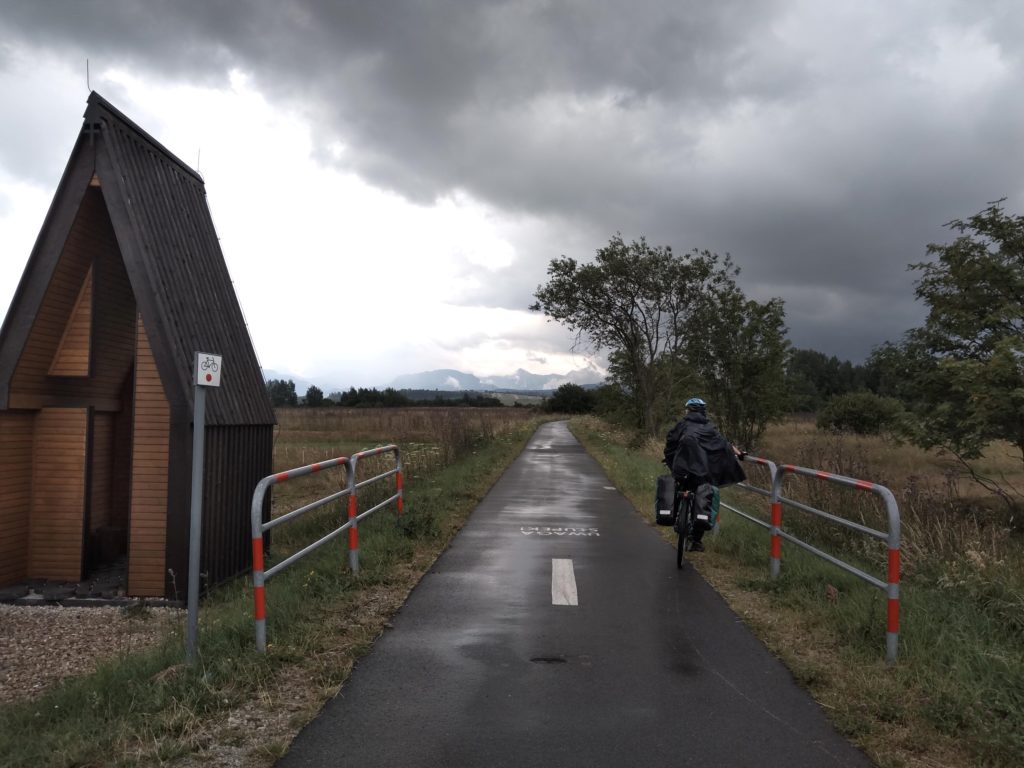There’s something beautifully liberating about the rhythmic patter of raindrops on your cycling helmet and the shimmering silver trails they leave behind on the pavement. Yet a few things can be more discouraging than squeezing your feet into soaked shoes or biking downhill with freezing fingers and a sopping jacket on your back.
Rainy days on a bicycle tour don’t have to be pure suffering. With the right gear and proper approach, you can survive the stormy days on your bike and get to your destination with a big smile on your face.
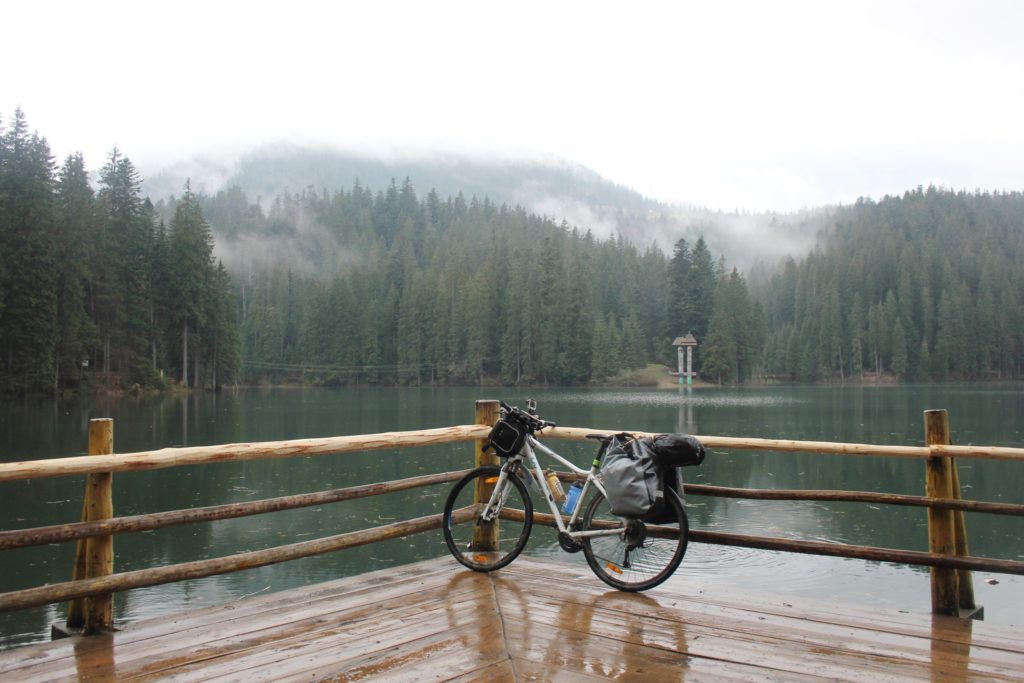
Over the years of my bicycle tours, I’ve been quite lucky with the weather. Most of my days on the bike were sunny and pleasant. I’ve had my fair share of rain, storms and even snow. I tested plenty of different ways to protect myself from the bad weather. I want to share this wisdom and experience with you.
Regardless of your budget, you’ll find some tips to ensure a dry and comfortable tour experience.
Get a good rain jacket
No matter where and when you’re cycling, don’t leave without a decent rain jacket. It doesn’t have to be “a cycling jacket”. If you’re outdoorsy and have a hiking waterproof jacket already, it will serve you well on your bicycle tour. You don’t need to invest hundreds in top-brand rain gear either.
How to find a good rain jacket for cycling?
Your choice should be based on two main factors: waterproofness and breathability. The first one helps to keep the rainwater outside, the latter will prevent you from soaking in your sweat.
I don’t buy jackets with a lower waterproofness rating than 10,000mm and with at least 10,000-15,000 mm of breathability.
You should also check if the jacket has pit zips. Cycling, especially through hilly terrain, is quite an intensive activity, so you’ll need that extra ventilation!
Consider bright colours or a jacket with reflective elements. It will make it easier for drivers to spot you cycling in the pouring rain.
A rain poncho for a few bucks can be a life-saver
Even the fanciest, most advanced rain jacket will give up in torrential rain. If you are surprised by a downpour, a basic rain poncho is the best way to protect yourself while cycling to the closest shelter.
A rain poncho takes little space, is cheap and ultralight. You should, however, only use it for short emergencies. Otherwise, you’ll sweat all your body water out.
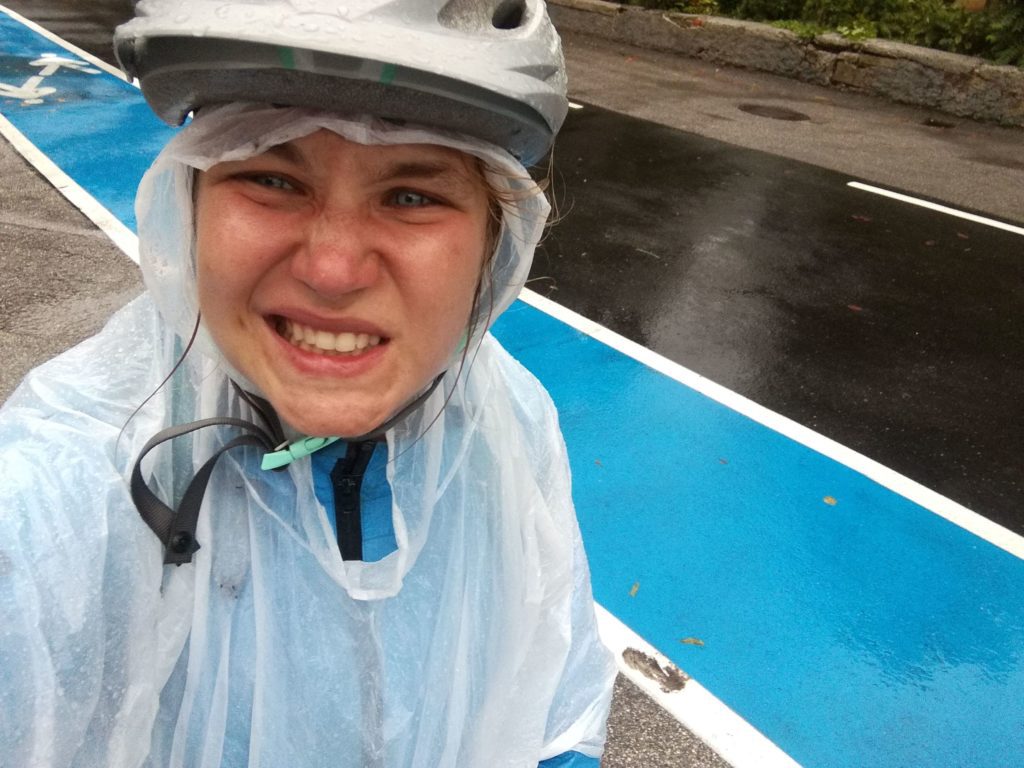
When it’s warm and rainy, it’s better to wear less
Putting the rain jacket on might defy its purpose if the temperature is high. It will just make you sweat.
In the summer rain, you’ll be better off wearing a thin, fast-drying t-shirt, shorts and sandals. You’ll quickly dry when the sun is back.
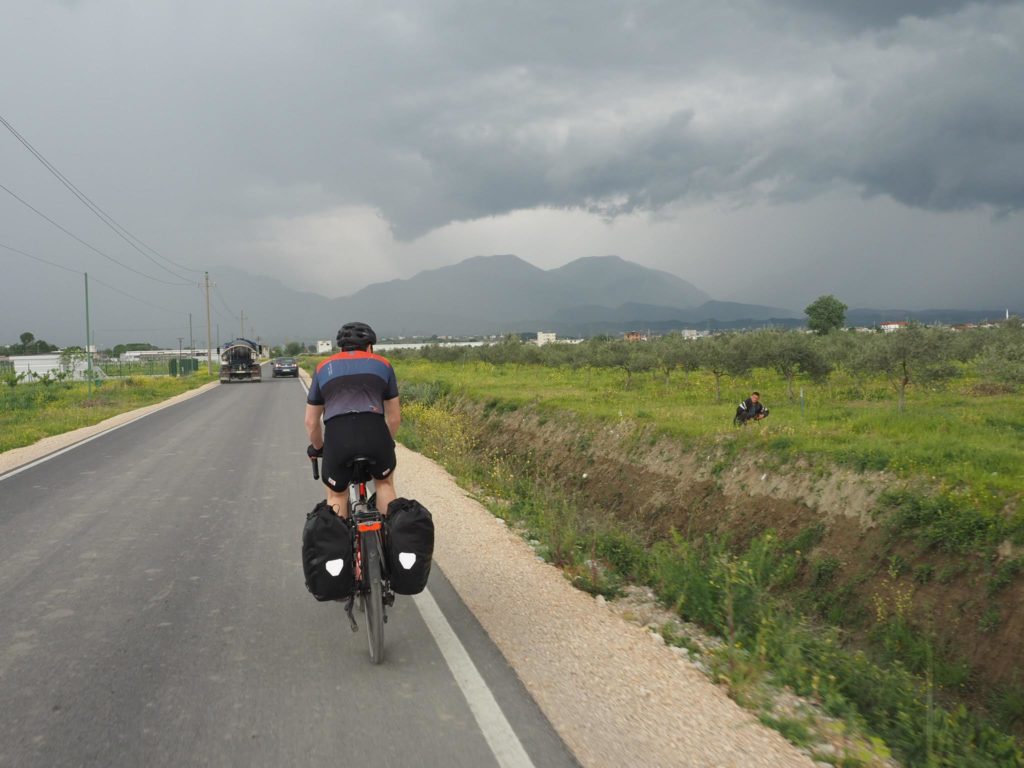
Keep your fingers dry and warm
If you’re cycling through the mountains, you’re familiar with the cutting wind numbing your fingers and toes on the descents in low temperatures.
Good-quality, waterproof cycling gloves will certainly keep your hands from freezing. However, they can be pretty pricey. It’s worth an investment if you often travel in bad weather.
If you’re strapped for cash, a simple solution will keep your fingers dry when cycling in the rain: rubber gloves. You can put them over your regular thin gloves. Of course, this is not a long-term solution, as your skin will sweat under the rubber, but it will do the job for the freezing downhill rides.
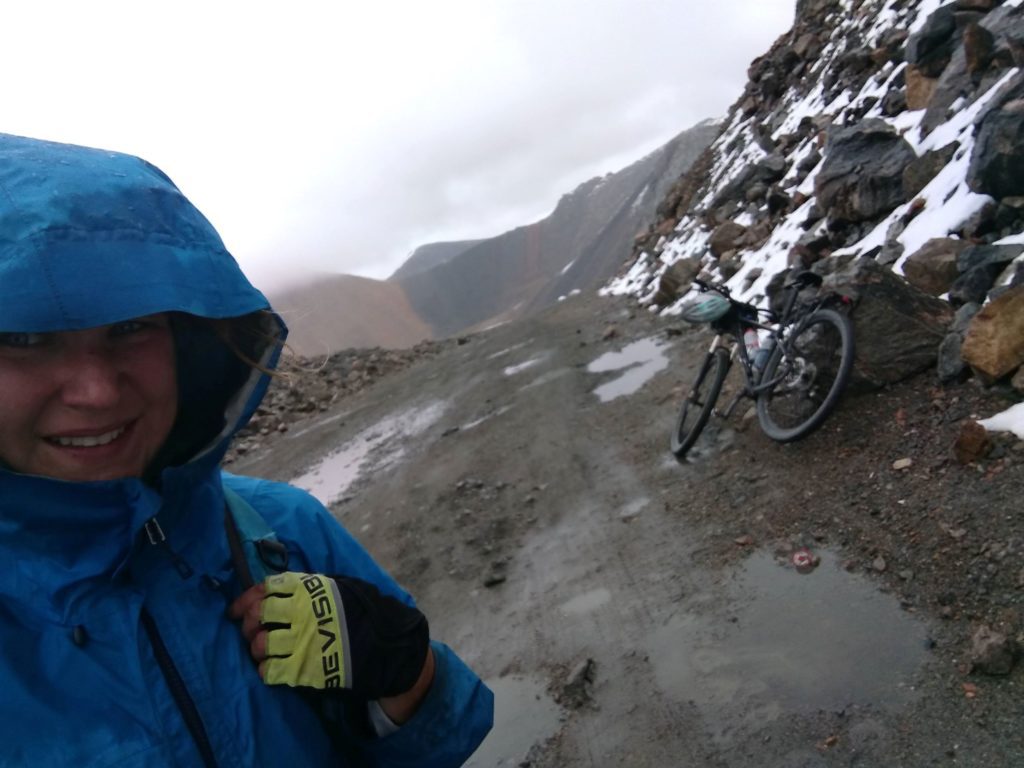
Keep your feet dry when cycling
Soggy shoes can be a real pain, especially when camping, with no place to dry them properly overnight. Keeping your feet dry when bicycle touring in the rain isn’t an easy task.
Waterproof gore-tex shoes are a good start, at least if you won’t cycle in the rain for too long.
The problem with them is the water sliding into your shoes along your pants. To prevent it, you should invest in gaiters. They will cover the tops of your shoes and keep the water out.
Another good invention is waterproof socks. I’ve never tried them out, but I’ve seen many people in the bike-touring groups swearing for them.
If you plan to cycle a lot in the cold and rain, cycling shoe covers will make your feet much more comfortable and warm.
In the warm summer rain, it’s better to put the sandals or flip-flops on and keep your other shoes dry in your panniers.
The rain caught you by surprise and your shoes are soaked? Stuff them with tissues or toilet paper before the night. The water will soak into the paper, helping your shoes to dry faster.
Keep your luggage dry
For longer bicycle adventures, waterproof panniers or bikepacking bags are a must. Double-check if you closed them properly. If you’re on the tight budget and all you have is non-waterproof commuter panniers, pack all your stuff in plastic bags.
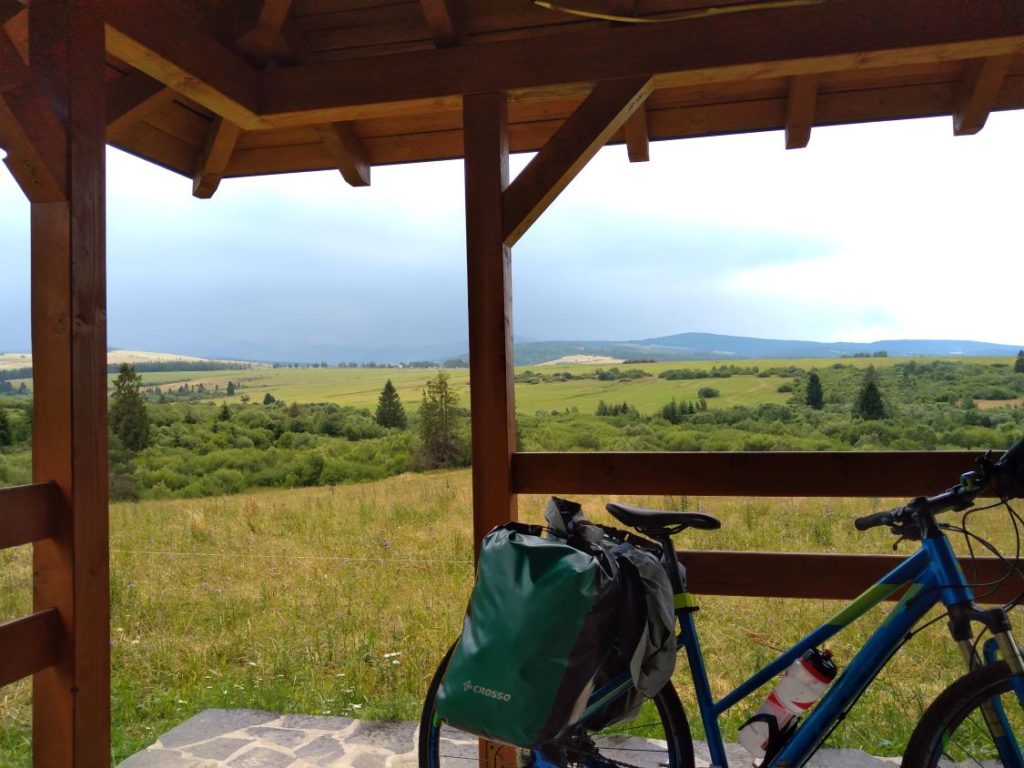
Adjust your plans to the weather
Sometimes, a day or two off from cycling is the best option. If it’s raining cats and dogs and the forecast is not optimistic, consider finding a B&B, WarmShowers or Couchsurfing and wait it out.
If you’re on a tight schedule, check if you can take a train instead of cycling. It’s not cheating – in the end, bicycle touring is supposed to be fun, and you’re the one who sets the rules of the game.
Sure, you don’t need to get scared by every little shower. But torrential rains or thunderstorms can be dangerous, especially in the mountains or remote places.

Keep a close eye on the weather radar and look for shelter if a big rainy cloud is on the horizon. No weather forecast is 100 % accurate, but I usually use Accuweather or Windy and found them most reliable.
Learn about the typical weather for the region you’re cycling through. For example in the Alps, it’s quite typical that the weather is nice in the morning and the afternoon brings a storm. By adjusting your schedule to the rhythm of nature, you can get the most out of the good conditions.
What are your secrets for bike touring in the rain? Share them in the comments!
